Injured and sick wildlife have been pouring into Dunedin’s new wildlife hospital since it opened just over a year ago. Some are sick and starving, others have had a close encounter with a shark, while a significant number of native wildlife were wounded during a narrow escape from people’s pets. Each patient has a story to tell.
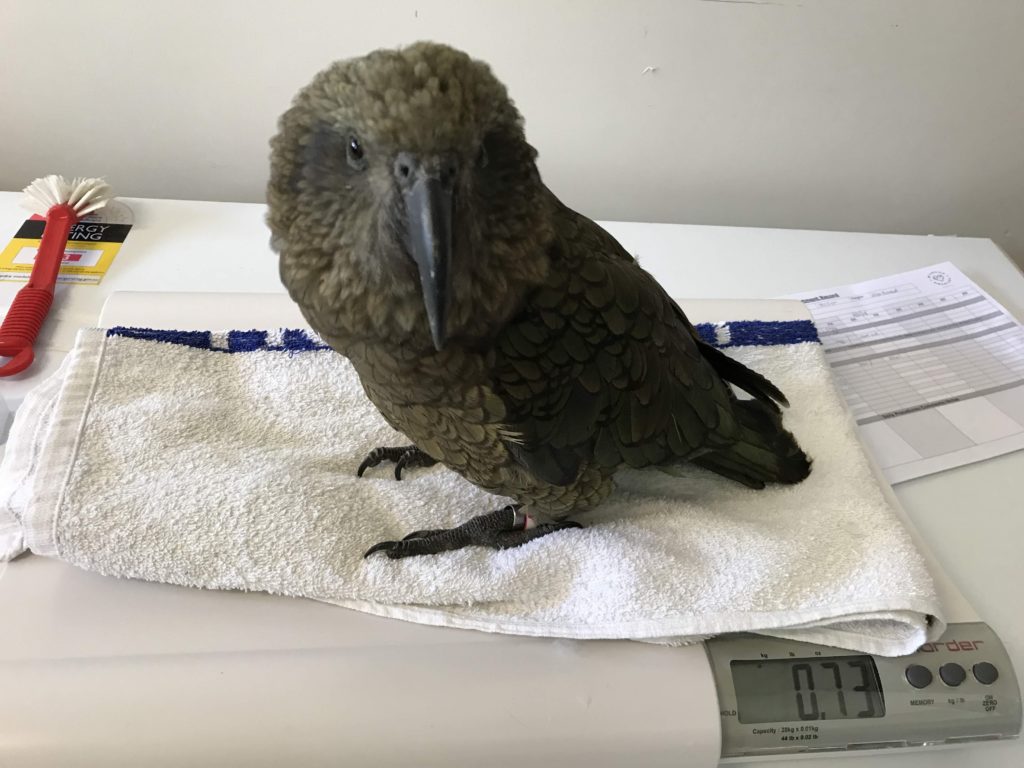
Dunedin Wildlife Hospital opened as a permanent facility on 15 January 2018, after a trial of two summer ‘pop up’ hospitals in 2016 and 2017 showed there was a real need for such a facility in the South.
“We have three permanent staff: Hospital Director Dr. Lisa Argilla, senior wildlife vet nurse Angelina Martelli and wildlife vet nurse Emily Brewer,” says Jordana Whyte, secretary of the Wildlife Hospital Trust. “We also have a veterinary intern, Dr. Lizzie Thomas, who is doing a year-long internship in wildlife medicine with us; she’ll be on staff through September.”
Patient numbers are a bit of a moving target.
“At the moment, we have 7 yellow-eyed penguins, 1 takahē, 1 Haast kiwi, 2 kākāpō, 2 kererū, 1 silvereye and 1 banded dotterel,” Jordana says. “This could change…any second! In our first 12 months, we treated 449 native animals. We are just over two months in to our second year, and we have already treated 224 patients.”
Most, but not all, of the wildlife treated at the hospital are native birds.
“The vast majority of our patients have been avian, but we have also treated one reptile (Auckland green gecko) and several pinnipeds (1 NZ sea lion and 2 NZ fur seals). We would be very excited to treat a bat and some other reptiles.”
Only native animals are treated at the Wildlife Hospital.
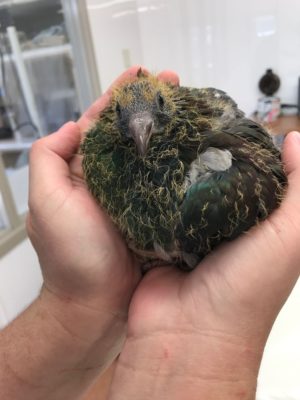
“Our catchment area is roughly south Canterbury across to Greymouth, and everything south of there, including Rakiura/Stewart Island. We have also had four patients that came to us from Nelson,” Jordana explains. “DOC is the primary referrer of patients; we do not accept patients from members of the public, unless they are directed by DOC to bring the animal to us. We do also get patients from our collaborators and conservation partners like Project Kereru, the Kea Conservation Trust, Yellow-eyed Penguin Trust and Forest & Bird, just to name a few.”
Some of the patients fly to Dunedin for treatment – courtesy of Air New Zealand!
“We have had a few patients come from pretty far afield, like from Fiordland and the West Coast,” says Jordana. “This often means that they are flown (courtesy of Air NZ) and sometimes this means an overnight in Christchurch en route to us. This has been the case with a few kiwis, kea and a Fiordland crested penguin; generally our friends up at the South Island Wildlife Hospital help out on the stopover by giving the patients a rest, fluids and any medications required on their way to us, and then see them to the plane to Dunedin. It’s quite special to get to pick up a kiwi from the airport,” she adds.
Some of those journeys can be quite epic and show the dedication of all those concerned with the care of our threatened and endangered species.
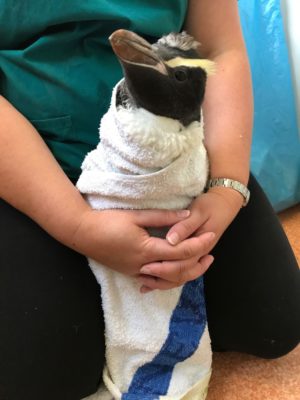
“We had one Rakiura kiwi patient who got into a tangle with a fence. She came out a lot worse than the fence!,” says Jordana. “This meant a ferry ride with a DOC escort and a car ride from Bluff before she could get to us. It’s amazing how quickly people take action,” she says, “And even though they are sometimes quite far away, we get to see the patients pretty fast in most cases. That kiwi was patched up and sent back to Rakiura with a story to tell her mates. She was a feisty one but has been advised to stay away from fences.”
Hand-rearing endangered kākāpō chicks this breeding season has also been an exciting challenge and huge responsibility for hospital staff.
“When we took on hand rearing of 25 kākāpō chicks recently, our Hospital Director and Senior Vet Nurse met Kākāpō Recovery staff halfway between Dunedin and Bluff. I’m pretty sure the chicks were taken off Whenua Hou by helicopter,” says Jordana, “Then they took two car rides to Dunedin. They were in special travel incubators and Dr. Lisa and Nurse Gina had to stop en route to Dunedin for the chicks’ scheduled feedings. It was quite stressful for all involved, as you can imagine, especially because one of the incubators was acting up a bit, and they needed to keep a close eye on the temperature of the chicks. Thankfully, everyone got to Dunedin in one piece. The incubators were quickly mended before they were needed again! No one needs that headache!”
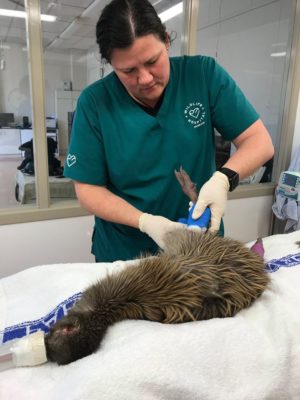
Injuries, sickness, starvation, orphans and foundlings – it’s all in a day’s work for the Wildlife vets and vet nurses.
“We see a big variety of presentations,” says Jordana. “Here are some examples of some presentations by species:”
• Yellow-eyed penguins – starvation, predator bites/wounds (particularly feet and flippers), avian malaria;
• Little blues – starvation;
• Harrier hawks – lead poisoning from eating rabbits killed with lead shot;
• Kea – lead poisoning and general illness, likely caused by being fed human food;
• Kererū – broken coracoids from hitting windows;
• Silvereye and tūī – dog or cat attacks;
• Kakī/black stilt – foot injuries;
• Kiwi – bacterial infections.
“And plenty of broken wings and some orphan cases,” she adds, “And sea birds like mollymawks and prions who are storm wrecked or otherwise grounded. The latter are generally uninjured but get health checks and then get sent along their way back to sea.”
Many are challenging cases and there are some heart-warming recovery stories too. Take, for example, a Yellow-eyed penguin that the team nicknamed Tendon Boy.
“Tendon Boy had a gnarly tendon injury in his foot that Dr. Lisa wasn’t sure she could fix, but she wanted to give him a chance. She researched procedures performed on tendons in the human hand, as she found that was the closest example to what she was seeing in the penguin’s foot, and adapted a surgery for both the penguin’s anatomy and what she knew would be required of his feet out in the wild,” says Jordana. “The end result is really exciting. He healed well and though he does have a somewhat limited range of motion compared to normal, he was doing well enough in rehab to be released in an area monitored regularly. He has now been resighted in the wild multiple times and is thriving despite a bit of a limp. His weights are healthy and he can now hopefully go on to breed.”
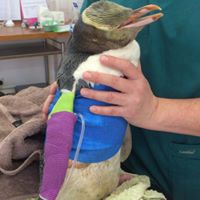
Yellow-eyed penguins feature frequently on the patient list.
“Another YEP that we call Crystal has been in to hospital not once, not twice, but three times for shark bite injuries. In fact, she was first seen before we even opened officially, as she was one of our pop-up hospital patients,” says Jordana. “The good news is that each time, the injuries are a bit less severe, but we hope she has now learned how to evade these sharks entirely. While we’re quite fond of her, we hope we only see her out on the beaches from now on.”
Wildlife medicine is challenging – so much less is known about the medical needs of wildlife and their responses to medications.
“There are a lot of unknowns,” Jordan says. “In some cases, animals present to us as being ‘sick’ in a general way, with no obvious cause, and they generally aren’t terribly cooperative in telling us what ails them. There’s added stress to being handled/around people and in hospital, which some species deal with better than others. Shags, for example, just don’t seem to do well in hospital. We do have an isolation/ICU ward for severely traumatised patients who need things very quiet, but sometimes they don’t make it past that room, which is hard.”
“Our veterinary team is amazing, though. We are incredibly lucky to have such skilled people in Dunedin. They have seen such an enormous variety of injuries and illnesses, and nothing seems to faze them.”
“Animal husbandry is really different with wildlife, and with the sheer variety of animals we see. Penguins, let’s be blunt, poop a lot. It smells terrible and goes everywhere. They are experts at pooping the instant their cages are clean. We would be lost without our volunteers who help clean cages daily and do mountains of gross laundry week after week. We also need to keep our sea birds and forest birds separated for hygienic purposes, so making sure we have appropriate spaces for all the patients sometimes means a round of musical cages.”
“Some patient need room to roam a bit, like takahē, and some can’t be in hard-sided cages, like kakī, who are easily spooked and are so fragile that we can’t risk them panicking and hurting themselves on a regular holding pen. We also need to keep our sea bird patients waterproofed, which means trips out to our therapy pool for some exercise and preening, which is a natural response to being in the water.”
“Food prep is another big challenge, as the variety of patients means lots of different things on the menu. When we had dozens of YEP chicks in hospital, our volunteers were making 15kg batches of fish smoothie, which is about as delightful as it sounds. Kererū have the yummiest looking diet, with seeds and fruit, and keeps the food processor busy. Kiwis have a super specific diet that was formulated by Massey University, and involves many different ingredients in precise ratios.”
“Some of our most clever patients – generally kea and kākā – need intellectual stimulation to keep them out of trouble, so staff and volunteers have to make puzzle toys for them or have to make regular changes to what is in their holding area to make sure they’re using their brains.”
“Sadly, one of the challenges in this work is compassion fatigue. Our vets and nurses are quite at risk for this and it’s important to note because it is a very real issue. They see a lot of patients in a year, and unfortunately many of the patients die despite our best efforts. Some die after being with us for weeks or even months, and it’s very natural to feel some sort of emotional attachment. It can be very depleting to be repeatedly exposed to pain and death in animals. It’s not something that is widely discussed, but it’s critical we look after our human staff as well as the patients.”
A significant number of patients come in with predator injuries.
“13% of our patients in 2018 presented with clear predator injuries. These were cases where the injury was witnessed, or clearly caused by predators, for example a penguin with a dog bite. 38% of patients in 2018 were classified as ‘trauma’ cases, some of which will likely have been caused by predators, but could not be directly attributed, or may have been an old wound that healed poorly or became infected, so the original cause of harm is too difficult to identify.
Many of those predators are family pets.
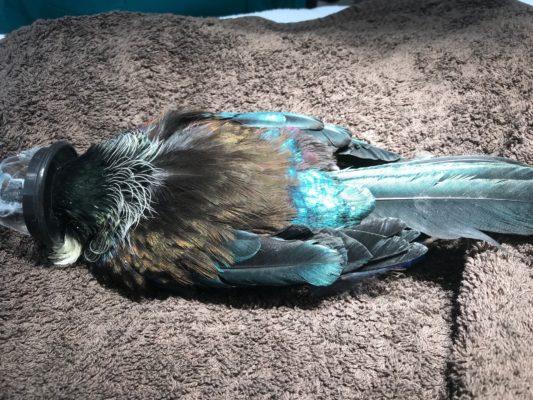
“It is really common to see ‘backyard birds’ like silverye, tui and bellbirds come in after being attacked by cats or dogs,” says Jordana. “Cat saliva entering a bird’s system – either through bite wounds or even preening themselves after being in a bird’s mouth – can cause bacterial infections that lead to death. Some birds are not necessarily severely injured but are very compromised due to stress of an attack.”
“Penguins moulting on beaches are extremely vulnerable to dog attacks. Penguins have to change out their feathers completely once per year. This takes up to a month, and means the penguin is standing on land for the entire time. They are unable to enter the water to eat or escape from dogs/people, etc.”
“It can take only seconds for a dog to inflict a fatal bite or shake to a penguin. Often this doesn’t even result in a visible wound, so dog owners may not be aware that any interaction took place. Puncture wounds from dog teeth are often small, and well hidden by dense feathers, but do serious damage including piercing airways and air sacs that regulate breathing. No penguin species is immune to this – from little blue penguins to rarer Snares crested penguins – we have seen them all in hospital with dog bites.”
Jordana has some simple tips for reducing the chance that your pet will harm wildlife.
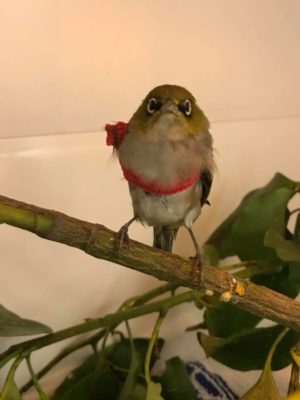
“In backyards, we ask people to have a look at their bird feeder set-up. Are you unintentionally setting up a buffet for cats? Are their hiding places for cats near where the birds are feeding? Are feeders too low? We recommend PekaPeka bird feeders, which are designed to deter multiple predators and pests.”
“Dog owners are encouraged to keep their dogs on a lead. When they are running free, please do not let dogs run into the sand dunes where penguins and other wildlife are resting. It takes less than five seconds for a dog to disappear behind a dune, grab a penguin and deliver a fatal bit or shake. At certain times of the year, NZ sea lion pups are hidden in dunes while their mums are away fishing. Young pups are extremely vulnerable to dog attacks.”
“Dog walkers can act as scouts – if you see wildlife on the beach, warn other dog walkers. Model good behaviour. Make a habit of scanning the beach as you walk to be sure no wildlife is present and, if it is, get that dog on a lead.”
Recent trail cam footage obtained by the Wildlife Hospital Trust has been a real eye opener about the dangers that penguins and other native wildlife face from introduced predators.
“The trail camera was set up to try to track a yellow-eyed penguin that had been spotted a few times at a certain site, but managed to evade University of Otago researchers who brought him to our attention. The penguin had unusual and concerning feather loss, to the point we were worried it was at risk of hypothermia from the cold water. We wanted to bring it in for veterinary care to see if we could identify the underlying cause of the feather loss, and to support it in regrowing those feathers with some rehab. Essentially the camera was to help us figure out if the penguin was still using the area, so we set it up where it had been seen a few times and left the camera out for a week or so before checking the footage.”
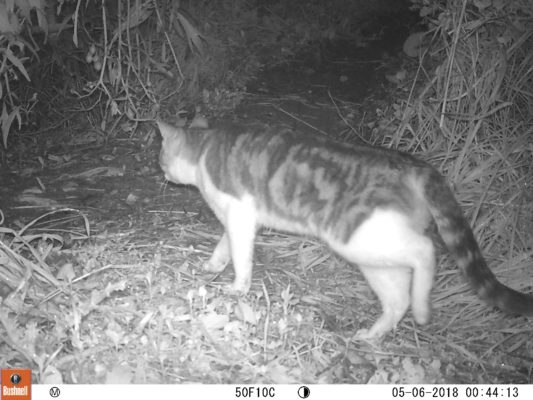
“We did, in fact, get photos of ‘Baldy’ as we started calling the penguin, going in and out fairly regularly, but we got more than we bargained for. The camera also caught lots of predators and pests – possums, mice, hedgehogs and, most worryingly, a lot of cats. This is a fragile yellow-eyed penguin breeding area, in which cats have zero business being. While an adult YEP has a very good chance of fighting off a cat, chicks are extremely vulnerable. We didn’t catch any predatory activity or attacks on camera, but their presence alone is cause for alarm.”
“Amusingly, we did get photos of two YEPs who were quite curious about the camera and popped in for a very close look. The bravely fled when the camera snapped their photo (don’t worry – they came back very shortly afterwards!). We did also get some great photos of a sea lion coming up the track for a late night snooze.”
Jordana advises that the Department of Conservation should be contacted if you find injured native wildlife. The Wildlife Hospital doesn’t take patients directly from members of the public.
“In the first instance, ring DOC on 0800 DOC HOT or their local DOC office. If you’re out and about on beaches or in the bush regularly, we suggest saving these numbers proactively in your contact list. DOC will ask some clarifying questions about the animal, its injury and its location. They may ask you to bring the animal to us, or they may come and uplift the animal themselves depending on what it is.”
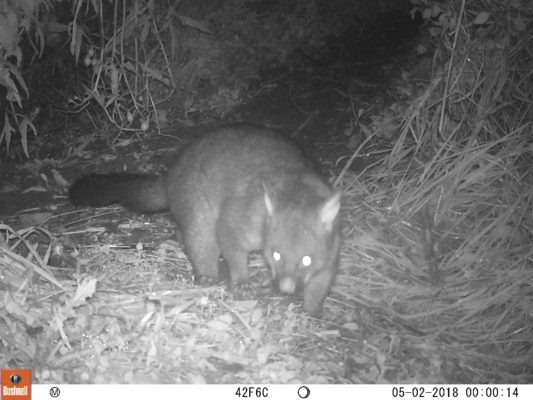
“We really want people to understand if they see a penguin on a dog beach, or an area very popular with people in general, there is very likely something wrong with it. It is absolutely not normal for a penguin to rock up on Smaills or Waldronville (beaches near Dunedin) or other places like that. Call DOC immediately. If a penguin is on a dog beach, it will not be very long before it receives a bite wound, if it hasn’t already. If DOC doesn’t have the resources to uplift the penguin, we will do our level best to get someone out there for us, but we ask that people try DOC first.”
There are several ways that members of the public can help support the Wildlife Hospital.
“We are a registered charity and do not receive Government funding, so the very first thing we ask of people is to support us financially if they are able. We are reliant on donations, sponsorships and grants. There are a number of ways to donate, which can all be found here.”
“A few times per year we have volunteer intakes for in-hospital helpers. When that’s open, information will be posted here.”
“We are always interested in out-of-hospital volunteers, like people who want to help fundraise, or may have governance or other skills that will help the Trust that operates the hospital. From time to time, we may ask for help with certain things, like digging up worms for kiwi patients, and those requests will be posted on our Facebook page, so we recommend following us there.”

